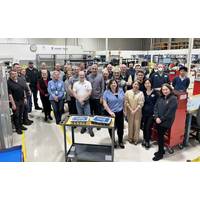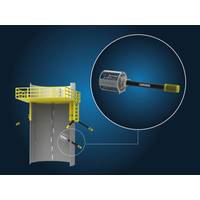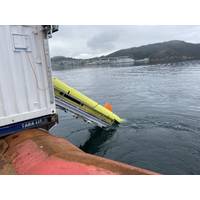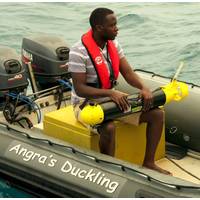
Mesoteh Rebrands to Kongsberg Discovery Canada
Vancouver-based developer of underwater technology Mesotech has rebranded to Kongsberg Discovery Canada, leveraging the global strengths of its parent company to enable further growth and success.Mesotech opened its doors in 1973, rapidly establishing a loyal customer base in the fishery and ocean science segments.Today, these key groups have been joined by businesses spanning areas ranging from renewable energy and infrastructure, through to search and rescue, all of whom rely on high resolution sonar systems and acoustic technology to unlock in-depth ocean understanding.Mesotech, which employs 50

MTR100: Underwater Cameras, Lights and Ocean Landers
Observation is the first step of the Scientific Method. “What’s that?”, leads to research, hypothesis, and then all the rest that ends in “discovery”. When we can’t send humans to look, we send the robots.Scripps Professor John Issacs developed his first deep sea “Monster Camera” in the 1960’s from surplus WWII aircraft nose cameras. His observations lead him to realize that photographs identify species, while film shows behaviors. It was another Scripps professor, Richard Rosenblatt, who counseled Issacs to look at fish from the lateral side view

Subsea Monopile Corrosion Protection
Corrosion and BlueStream launched ICCP-SAM, touted as sustainable corrosion protection of XX(X)L monopile foundations. ICCP-SAM is designed to remotely install ICCP anodes on monopile foundations of all sizes, anywhere on the foundation and even in the roughest ocean conditions.The ICCP-SAM (Subsea Assembly Method) is compact and can be transported and deployed with minimal resources from the topside of the offshore foundation. It is operated remotely and maneuvers the anode underwater into the designated foundation entry hole. The anode is then secured to the foundation using the same tool

Argeo Builds the Tools to Bridge the Data Gap
same time, not too quickly.Watch the full interview with Trond Crantz, CEO, Argeo, here:Recent ARGEO HightlightsThe new Argus USV.Photo courtesy ArgeoDuring the summer Argeo took delivery of its Unmanned surface vessel (USV) Argus USV.Argeo recently entered into a 5-year bareboat contract for the subsea vessel Argeo Searcher. The combination of Searcher, our own AUVs and the possible addition of onboard ROV’s makes this a very attractive multi-purpose operational platform for subsea operations.Argeo has developed a recently patented portfolio of electromagnetic source and receiver systems
Innomar Ocean Technology raises $4.2m
Innomar Ocean Technology, based in Grimstad Norway, produces smart buoys and new tech solutions aimed at digitizing and developing a sustainable relation to the oceans. Innomar announced it raised a $4.2 million investment round to further support its growth agenda. The round was led by Ocean Impact, based in Sweden, and the European Innovation Council (EIC) Fund, who were supported by 15 of Innomars existing shareholders, including amongst others OK Marine (Part of Egersund Group) and MP Pensjon PK.“Innomar is all about leading the way in the digitization of the oceans with the aim to

NOC puts Robots at the Center of Ocean Obs in Developing Nations
A community engagement program in East Africa led by the National Oceanography Center (NOC) is demonstrating how marine robots have the potential to transform ocean research for developing nations.The SOLSTICE-WIO program involved multiple partners in the Western Indian Ocean (WIO) and East Africa and engaged with regional researchers as well as six Tanzanian coastal communities. The program tested and assessed the potential and readiness of WIO nations to adopt autonomous technologies to meet its marine research priorities and ultimately increase capacity to help meet food security and ocean sustainabi



 February 2024
February 2024





